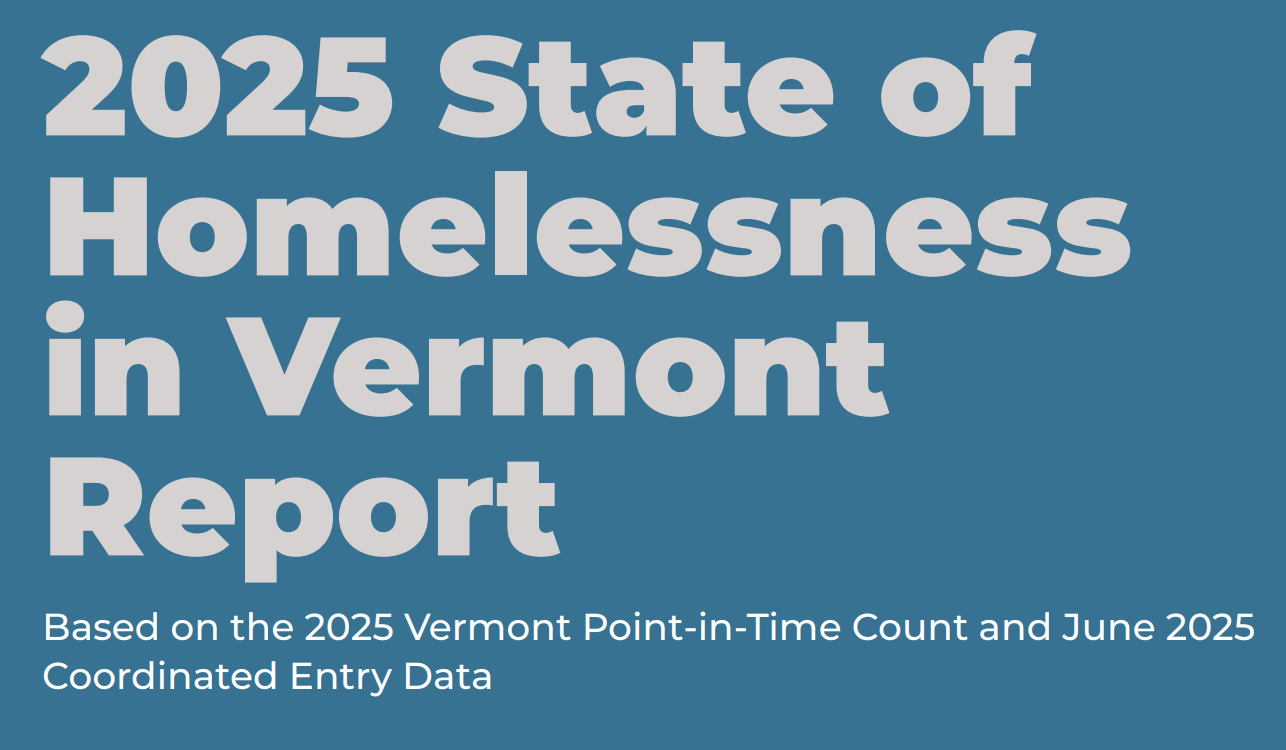One Side In, One Side Out: Homeless Report Authors Exclude Multiple Viewpoints
Both Sides, Full Story: You Decide.
Vermont’s homelessness crisis is growing at a staggering pace, with a new report placing the state among the highest in the nation for its per-capita rate of unhoused residents. But as lawmakers, advocates, and Vermonters absorb the findings, a critical question looms: Does the 2025 State of Homelessness in Vermont report present the full picture—or just one side of the policy spectrum?
The report, authored by the Housing & Homelessness Alliance of Vermont (HHAV) and its partners, paints a dire portrait of life for thousands of Vermonters without homes. It calls for major state investments in permanently affordable housing, expanded shelter systems, and wraparound social services—backed by the moral framing that inaction amounts to a policy failure.
But critics across housing, economic, and regulatory fields argue the report overlooks key perspectives—particularly those emphasizing housing supply, land-use reform, private-sector participation, and the fiscal sustainability of ongoing programs.
“It’s a comprehensive look at the human impact of homelessness,” said one housing policy consultant familiar with Vermont’s shelter system, “but it’s not a comprehensive look at what’s causing it—or how to fix it.”
What the Report Covers—and What It Doesn’t
The 46-page document is built on the January 2025 Point-in-Time Count and June’s Coordinated Entry data. It found 3,386 people unhoused on a single winter night and more than 4,500 in June. The majority had been homeless for over 90 days, and many were children, seniors, or people reporting serious mental illness.
The authors attribute the surge to two primary causes: years of underinvestment in permanently affordable housing, and a rollback of Vermont’s pandemic-era motel voucher shelter program. They call for renewed public investment to build income-restricted housing and fund emergency programs.
Yet the report includes no discussion of:
Filtering, the well-established economic process by which market-rate housing becomes more affordable over time;
The role of overall housing supply in driving affordability, particularly Vermont’s extremely low vacancy rates;
Regulatory barriers like Act 250 and local zoning that many developers say hamper the pace and scale of housing construction.
“By focusing solely on subsidized housing and services, the report ignores decades of evidence that increasing total housing supply relieves pressure on the lower end of the market,” said Art Woolf, economist and professor emeritus at the University of Vermont. “If you don’t build more housing at all income levels, you’re never going to solve this.”
Excluded Experts, Narrow Recommendations
In addition to economists, the report omits perspectives from developers, regional planners, zoning reform advocates, and fiscal policy experts. During the 2023–24 biennium, Vermont lawmakers passed S.100 and Act 47—two bipartisan housing reform laws aimed at reducing regulatory barriers and encouraging dense development near town centers. These efforts are not acknowledged in the report.
One Chittenden County planner, speaking on background, said, “We support subsidized housing, but it can’t be the only tool. You have to make it easier to build housing across the board. We have to stop acting like the private market is irrelevant.”
The report also steers clear of critiques from Governor Phil Scott and moderate lawmakers who say current shelter policies are financially unsustainable and need clearer exit strategies.
In June, Scott vetoed H.879, a homelessness expansion bill, saying it lacked structure and accountability. He urged a shift toward programs that combine housing with services and time-limited support.
“This cannot just be about keeping people housed in motels indefinitely,” Scott said during a June press conference. “We have to make sure there’s a path forward—housing plus services, not housing only.”
The report’s authors reject such frameworks, stating that policies requiring participation in services are stigmatizing and counterproductive. Critics argue that excluding this debate from the report reflects a deeper philosophical bias.
Financial Trade-Offs and the Question of Will
The report repeatedly frames Vermont’s housing and homelessness crisis as a failure of political will, not capacity. But fiscal analysts say the financial context deserves more attention.
According to a 2024 report from the Joint Fiscal Office, Vermont has spent over $50 million annually on emergency motel housing since the pandemic began. That number has drawn scrutiny from budget-conscious lawmakers and taxpayers alike.
Demographic data on residency is largely absent from both the report and the state’s shelter entry system, though anecdotal cases exist. In 2024, WCAX reported on a couple who relocated from Florida to Vermont after learning about its generous hotel voucher system.
The report assumes homelessness is overwhelmingly driven by local economic hardship and structural barriers—a position supported by advocates, but not examined alongside other plausible contributing factors.
What a Broader View Might Include
A more balanced approach, critics argue, would have incorporated:
Economic analysis of how increasing market-rate and workforce housing impacts affordability over time;
Input from developers and permitting officials on what’s preventing faster construction;
An assessment of fiscal sustainability, especially as federal COVID funds disappear;
Perspectives from behavioral health providers and recovery specialists on how to integrate treatment and housing services;
A deeper look at regulatory reform, including the impact of Act 250 on housing development timelines.
A One-Sided Framing?
None of this is to dispute the reality that Vermont’s homelessness problem is growing—and the report deserves credit for drawing attention to the scale and urgency of the issue. But some lawmakers and experts caution that placing the full weight of the solution on state funding, without integrating supply-side fixes, is incomplete at best.
As housing takes center stage in the 2026 legislative session, Vermonters may increasingly look not just at what’s in the reports shaping policy—but what’s been left out.


